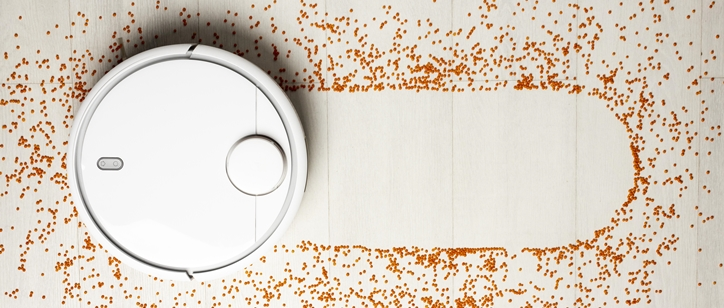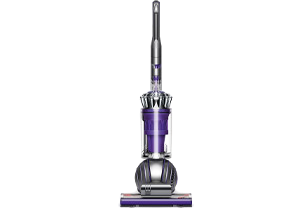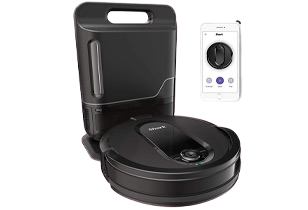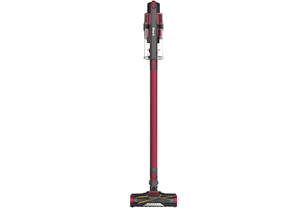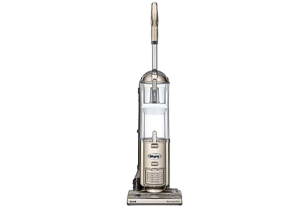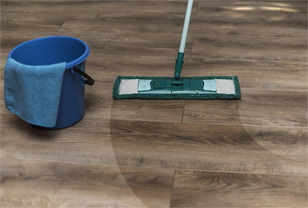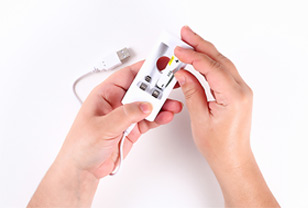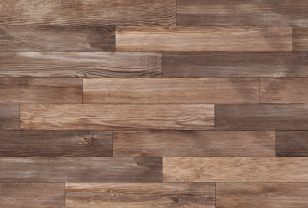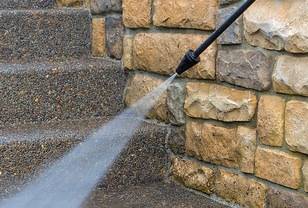Best Robot Vacuum for Tile Floors: The Most Effective Models
Dive deep into my analysis, comparisons, and reviews to discover the best robot vacuum for tile floors tailored specifically for your home's needs.
Best Robot Vacuum for Tile Floors

iRobot Roomba s9+
Why is it better?
≫ Ultra-powerful suction
≫ Self-emptying base for hands-free maintenance
≫ Precise mapping to tackle every space
≫ Highly customizable cleaning schedules
≫ Works with Alexa and Google Assistant
| Picture | Products | Rating/Shop | |
|---|---|---|---|
Image  | Products iRobot Roomba s9+ | Rating 89 | |
| Suction Power 97% Noisy level 85% For cleaning up hair 86% For deep cleaning 88% | |||
Image  | Products iRobot Roomba j7+ | Rating 86 | |
| Suction Power 88% Noisy level 85% For cleaning up hair 88% For deep cleaning 84% | |||
Image  | Products Eufy RoboVac 11S | Rating 91 | |
| Suction Power 93% Noisy level 86% For cleaning up hair 95% For deep cleaning 90% | |||
Image  | Products Shark RV1001AE IQ | Rating 87 | |
| Suction Power 88% Noisy level 88% For cleaning up hair 89% For deep cleaning 84% | |||
Image  | Products Neato D10 | Rating 85 | |
| Suction Power 86% Noisy level 85% For cleaning up hair 84% For deep cleaning 83% | |||
Image  | Products Ecovacs Deebot T20 Omni | Rating 82 | |
| Suction Power 84% Noisy level 80% For cleaning up hair 84% For deep cleaning 81% | |||
Image  | Products Roborock S7 Max Ultra | Rating 84 | |
| Suction Power 88% Noisy level 82% For cleaning up hair 84% For deep cleaning 81% | |||
Image  | Products Eufy RoboVac X8 | Rating 85 | |
| Suction Power 85% Noisy level 82% For cleaning up hair 88% For deep cleaning 86% | |||
Image  | Products Neato Botvac D3 | Rating 86 | |
| Suction Power 88% Noisy level 83% For cleaning up hair 87% For deep cleaning 85% | |||
Image  | Products Roborock Q Revo | Rating 92 | |
| Suction Power 90% Noisy level 92% For cleaning up hair 93% For deep cleaning 94% | |||
iRobot Roomba s9+

Pros:
≫ Ultra-powerful suction
≫ Self-emptying base for hands-free maintenance
≫ Precise mapping to tackle every space
≫ Highly customizable cleaning schedules
≫ Works with Alexa and Google Assistant
Cons:
≫ Expensive price tag
≫ The self-emptying mechanism is loud
≫ Battery life could still be extended
Gone are the days when robot vacuums were mere clumsy gadgets. The Roomba s9+ represents the peak of automated floor cleaning, combining cutting-edge technology with polished performance to set new standards, especially for tile floors.
The s9+ utilizes advanced vSLAM navigation, constructing detailed maps by combining camera and sensor data. It tracks its location precisely, so if you accidentally move it mid-cleaning, just place it back, and it resumes right where it left off.
This type of precision mapping is something some laser-guided models still struggle with. An added plus is that the s9+ maps multiple floors, making it a great choice if your home spans several levels.
One of the most game-changing features is the self-emptying base. Imagine never having to manually empty the dustbin again. For pet owners, those with large homes, or anyone who detests this chore, this feature is an absolute dream come true.
When it comes to tile floors, an area notorious for showing every speck of dirt, the s9+ really shines. Its advanced navigation seamlessly transitions between tile and other types of floors for meticulous cleaning. The unique D shape is particularly adept at reaching into grout lines and corners, areas round robots often miss.
I've seen it handle everything from fine dust to large debris like cereal with ease, which is impressive given the tile's slippery nature. It also auto-adjusts its height to maintain full contact with the tile for superior cleaning results. This robot vacuum demonstrates unmatched adaptability as it expertly navigates uneven or slightly raised tiles.
Battery life is substantially longer on tiles compared to carpets because of the reduced resistance. However, for very large homes or spaces with excessive debris, the s9+ may need a recharge before completely finishing the job.
The iRobot app makes it simple to control the s9+ and customize cleaning schedules. While the interface is among the best in the industry, newcomers may encounter a learning curve to fully utilize all features. The app provides handy maintenance reminders but sometimes triggers them prematurely before parts actually need replacing.
Verdict: In conclusion, the Roomba s9+ justifies its premium price point for tile floor cleaning. With its intelligent navigation, unmatched suction power, and game-changing self-emptying capability, it represents the pinnacle of robot vacuum technology.
For those seeking meticulous automated cleaning who can afford the investment, the s9+ delivers. However, buyers focused purely on obstacle avoidance or deterred by the high price may want to consider alternatives.
▬▬▬▬▬▬▬▬▬▬▬▬▬▬▬▬▬▬▬▬▬▬▬▬▬▬▬▬▬▬▬▬▬▬▬▬▬▬▬▬▬▬
iRobot Roomba j7+

Pros:
≫ Convenient automatic dustbin emptying
≫ Quick cleaning schedules by room
≫ Powerful suction picks up debris
≫ Excellent navigation and mapping capabilities
≫ Automatically recognizes and labels rooms
Cons:
≫ Expensive purchase price
≫ Very loud when running and emptying
≫ Some limitations in thoroughness
The iRobot Roomba i7+ encapsulates much of the same cutting-edge technology as the s9+, but in a slightly more budget-friendly package.
It has a sleek contemporary design, with a 13.4-inch diameter body in black and silver. Central to its styling is a navigation camera, accompanied by illuminating start, home, and spot clean buttons that light up depending on the task.
Looking at the underside reveals a blend of traditional components like dual rubber rollers and a side brush, along with more advanced features like drop sensors. It also has a unique dustbin that syncs seamlessly with the Clean Base for automatic emptying after each cleaning session.
This base is what really sets the i7+ apart from other robot vacuums. It is far more than a simple charging dock, as this substantial unit houses its own internal vacuum mechanism designed to empty the contents of the i7+'s dustbin into an enclosed bag after each cleaning.
This bag can hold debris for up to 30 cleaning sessions before needing replacement, with the app notifying users when it's time to change it out. While the replacement bags do add an extra ongoing cost, for most owners the sheer convenience is worth it.
Right out of the box, the i7+ also includes a number of accessories to optimize the cleaning experience, like a virtual wall barrier, extra side brush, and replacement filter. This ensures new owners have everything they need to kick off their automated cleaning sessions.
One of the most impressive features is the i7+'s advanced navigation and mapping capabilities. While it may take a few complete runs to fully map larger spaces, once it has done so, you can label individual rooms and easily schedule cleanings according to room. The i7+ also integrates smoothly with voice assistants like Amazon Alexa and Google Assistant for added convenience.
In our testing, the Roomba i7+ demonstrated versatility across different floor types, including tile, vinyl, and hardwood.
It adeptly maneuvered around furniture and obstacles and seemed to improve its navigation after repeated use as it learned the layout better each time. Suction power is another strong suit, as the i7+ had no issues picking up dirt, dust, hair, and other debris.
The i7+ works in a systematic pattern, appearing to refine its cleaning efficiency more and more with each successive run of an area. One particularly impressive capability is its ability to adapt to shifting floor layouts and relocate specific rooms it has learned previously.
On the downside, the robot is noticeably loud during operation compared to some other high-end robot vacuums. While no robot vacuum is silent, the noise level on this model is significant enough that some users may find it distracting. The Clean Base itself is also surprisingly loud when emptying the dustbin.
Battery life is around 60 minutes, which is a bit shorter than the 90 minutes offered by some comparable premium models.
Verdict: For those seeking a top-tier automated tile floor cleaner with advanced features, the i7+ represents an impressive option that captures much of the s9+'s technology at a more affordable price point. However, the loud operation and bulky Clean Base could be potential drawbacks in some situations.
▬▬▬▬▬▬▬▬▬▬▬▬▬▬▬▬▬▬▬▬▬▬▬▬▬▬▬▬▬▬▬▬▬▬▬▬▬▬▬▬▬▬
Eufy RoboVac 11S

Pros:
≫ Affordable
≫ Hassle-free setup
≫ Compact and slim design
≫ Quiet operation
≫ Impressive cleaning prowess on tile floors
≫ Reliable battery life
Cons:
≫ Limited feature set
≫ No app or voice command integration
≫ Navigational challenges in cluttered spaces
There's no need to break the bank for a top-tier robot vacuum anymore. The Eufy RoboVac 11S is an upgraded version of the beloved RoboVac 11. It boasts powerful cleaning in a sleeker package and stands as a testament to quality meeting affordability.
The RoboVac 11S is not your regular bulky vacuum. Standing just 2.85 inches off the ground, it effortlessly slips under most furniture to make sure no dirt is left behind. And at a mere 5.73lb, you can easily move it between rooms.
The RoboVac doesn't just wander aimlessly. Equipped with infrared sensors, it skillfully avoids obstacles, and thanks to drop-sensing tech, it's saved from potential falls.
Control is a breeze with its remote; you can set it to one of five cleaning modes, from full Auto mode to Spot cleaning or even Manual navigation. Power levels vary from Standard to the adaptive BoostIQ, and the intensive Max mode.
Scheduling clean-ups is straightforward – just set the time on the remote. Although you can't set it for multiple times a day, its daily routine is more than sufficient for most homes.
On a full charge, it powers through up to 100 minutes of cleaning, spanning across different rooms. Transitioning from tiles to carpets is no problem. Its adaptive power levels ensure consistent cleaning. And when power dwindles, it smartly docks to recharge.
Unlike its noisy peers, the 11S keeps it low, letting you enjoy a peaceful day undisturbed by the drone of a vacuum.
The RoboVac 11S effortlessly clears larger particles like dry oats from both tile floors and carpets. It eliminates the need for higher settings. However, finer particles, such as flour or cookie residue, become a challenge on the carpet, especially when the debris is trampled into the fibers.
Even after pre-cleaning, the 11S still managed to scoop up lingering dust, pet dander, and hair. But hair strands can wrap around the roller brush, requiring occasional cleaning. The rotating brushes remain relatively clean, but some bristles may warp over time.
Verdict: For those desiring straightforward tech, the RoboVac 11S hits the mark. It efficiently collects debris from hard floors, which is ideal for light daily cleaning. The lack of intricate controls or feedback like battery level or bin fullness may irk some. But considering its price point, it's a solid buy that promises simplicity and performance.
▬▬▬▬▬▬▬▬▬▬▬▬▬▬▬▬▬▬▬▬▬▬▬▬▬▬▬▬▬▬▬▬▬▬▬▬▬▬▬▬▬▬
Shark RV1001AE IQ

Pros:
≫ Many smart features without hefty price tags
≫ Self-emptying base and self-cleaning brushroll
≫ Sophisticated home mapping and zoning options
≫ Exceptionally robust
Cons:
≫ Just average battery life
≫ Noticeably noisy, especially on harder floors
This is a splendid blend of mid-range pricing and advanced features that bring incredible value to the table.
One of the IQ Robot XL's standout features is its dual dustbin system. The robot itself houses a dustbin, but there's also a larger counterpart nestled within the base station.
Every time the robot retreats back to its station post-cleaning, it offloads its contents with a distinctive sound. This transfer process is rendered transparently, thanks to a window on the base station's side that allows users to monitor the fill level.
Though it doesn't come bundled with a traditional remote, you still have a plethora of options for control. Situated prominently between its primary buttons is the IQ Navigation module, a state-of-the-art system enabling the robot to map its surroundings and pinpoint its location.
Tailored cleaning is made possible with its three power settings: Eco, Normal, and Max, letting users select based on cleaning intensity and battery life preferences.
The Shark IQ robot delivers good efficiency by gliding swiftly in linear patterns. This is something markedly different from the random navigation seen in some lower-end models.
The adaptability is also striking. The robot can adeptly switch between diverse floor types, ensuring no strand of pet hair remains on surfaces or rugs. The docking station’s window can show significant debris accumulation after just one or two runs.
However, it isn't flawless. Its operation, particularly on hard floors, can be rather loud. Measurements indicate around 57dB on hard surfaces, roughly equivalent to normal conversation levels, but this can escalate in Max mode.
Emptying it is a cinch. With just a press of a button, the bottom of the dustbin releases. It then deposits the contents directly into a trash bin, keeping the process clean and hassle-free. The scheduling feature, allowing customized cleaning routines, also enhances user convenience.
Verdict: The Shark RV1001AE IQ emerges as a potent ally for those keen on maintaining spick and span floors with minimal intervention. While it could benefit from enhanced app functionality, it remains a stellar choice for medium-sized homes, prioritizing consistent cleaning results without the constant need for manual oversight.
▬▬▬▬▬▬▬▬▬▬▬▬▬▬▬▬▬▬▬▬▬▬▬▬▬▬▬▬▬▬▬▬▬▬▬▬▬▬▬▬▬▬
Neato D10

Pros:
≫ Exceptional suction capability
≫ Remarkable battery duration
≫ Comprehensive app features
≫ Use a true HEPA filter
Cons:
≫ Steeper price
≫ Noisy at times
Keeping large, open floor plans clean can be a formidable task. What is the best robot vacuum for tile floors in a large house? The new Neato D10 vacuum is here to help make tidying these big spaces faster and easier.
At a glance, you might mistake its design inspiration as stemming from the Tesla Cybertruck. But don't be fooled – this vacuum emphasizes functionality over form, and its availability is nothing like the elusive EV.
Its unique D-shape, combined with a brushed metal finish, exudes a futuristic yet robust vibe. Yet, at 8 pounds, it's handy enough to move between rooms or even floors.
This D-design is not just aesthetic; it boosts cleaning efficiency. The straighter front houses a wider brush, which works wonders along walls and furniture.
Its dustbin is another marvel – at 700ml, it's significantly larger than many competitors. This capacity benefits not only large homes but also smaller spaces by requiring less frequent emptying.
However, it's worth noting the absence of an auto-empty feature – users must manually clear the bin. But thanks to its user-friendly design, emptying it is a breeze.
A hefty 2,500Pa suction power aligns it with top-tier competitors, and its adaptable power modes ensure that performance and battery longevity go hand in hand. The substantial 6,200mAh battery is among the heftiest in the market, with Neato's promise of up to 300 minutes of runtime.
Throughout our tests, this robot vacuum consistently cleaned up various debris on tile floors, including hair strands, rice grains, and even cardboard scraps.
The D10 adeptly recognizes the transition from tiles to hardwood, preventing tumbles over ledges. When faced with obstacles, it expertly performs k-turn maneuvers to reroute itself. Additionally, the D10's bump sensors enable it to learn from encounters with walls or furniture, adjusting its future cleaning routes accordingly.
However, clocking in at an average of 69dB, the D10 isn't the most discreet performer. While its Eco mode reduces the noise somewhat, it's not the best background noise for virtual meetings or working.
Also, remember that if the charging base is relocated during a cleaning session, the D10 will return to its original spot, causing some confusion.
Verdict: The Neato D10 undoubtedly delivers robust suction and an impressive battery lifespan. Despite its higher price tag, its reliability makes it a strong contender for large houses.
▬▬▬▬▬▬▬▬▬▬▬▬▬▬▬▬▬▬▬▬▬▬▬▬▬▬▬▬▬▬▬▬▬▬▬▬▬▬▬▬▬▬
Ecovacs Deebot T20 Omni

Pros:
≫ Stellar cleaning and mopping results
≫ Innovative hot water mopping
≫ User-friendly
≫ Minimal maintenance required
Cons:
≫ Limited battery lifespan
≫ Premium price point
≫ Inconsistent navigation and obstacle detection
If you're on the lookout for a hybrid vacuum/mop that's efficient on tile floors, this might just be the game-changer you need. Unveiled as a successor to the Deebot X1 Omni, it's Ecovacs' ambitious attempt to redefine the standards of tile floor dry and wet cleaning.
The Deebot T20 Omni boasts a somewhat bulky design, attributed mainly to its expansive LiDAR dome on top. Yet, its sleek form factor allows it to venture under most furniture seamlessly. The downside is that the panel detaches fully, requiring temporary storage during maintenance tasks.
The white and silver palette exudes premium vibes, though certain build quality aspects could be more refined, particularly given its price point. The large frame of the docking station holds a 4L water capacity capable of cleaning vast areas and a 3L dust bag, though, like the robot, some components could be sturdier.
Setting up the T20 Omni is a breeze with the Ecovacs app. Once paired, the robot initiates a mapping expedition of your residence. It can store maps for multi-storied homes, up to three levels.
Another distinctive feature is Yiko, the robot's built-in voice assistant. Though it may not rival Google Assistant or Alexa in responsiveness, it does add a layer of convenience, especially for homes without smart speakers. However, while feature-rich, the app does suffer from usability issues, often proving counterintuitive and, at times, glitchy.
The machine's 6,000 Pa vacuuming capability, coupled with its dual side brushes, ensures that dust and debris on tile floors are efficiently captured. With a dual brush-roller, which might have enhanced its performance on thicker rugs, its current setup effortlessly tackles dirt across various surfaces.
The T20 Omni takes the lead when it comes to mopping stubborn stains. Using hot water, it efficiently tackles spills like dried coffee and soda.
However, the design lacks a built-in water tank, relying instead on an external base station to dampen mop pads. This causes a quick dry-out of the mop and a noticeable decline in water temperature during cleaning.
While adjusting dampness settings can counteract this, the water consumption tends to shoot up, covering much less ground than the brand's claims.
Navigation is generally smooth, thanks to a combination of LiDAR and infrared sensors. The robot transitions between rooms effortlessly and identifies larger obstacles with ease.
Still, it occasionally fumbles with smaller items and cords, which might lead to entanglements. Battery life is a slight concern, particularly when using max mode, and one might find themselves needing to charge it frequently.
Verdict: The Ecovacs Deebot T20 Omni is undoubtedly a force to be reckoned with in the world of robot vacuums and mops. Its cleaning capabilities, combined with its innovative mopping feature, make it the best robot vacuum and mop combo for tile floors.
▬▬▬▬▬▬▬▬▬▬▬▬▬▬▬▬▬▬▬▬▬▬▬▬▬▬▬▬▬▬▬▬▬▬▬▬▬▬▬▬▬▬
Roborock S7 Max Ultra

Pros:
≫ Excellent tile floor cleaning
≫ Good at picking up pet hair
≫ Accurate floor detection
≫ Efficient and fast mapping
≫ Effective mop functions
Cons:
≫ Subpar battery lifespan
≫ Limited to proprietary cleaning solutions
≫ Mediocre carpet cleaning performance
When it comes to managing pet hair, the Roborock S7 Max Ultra stands out from the crowd.
This robot vacuum not only boasts a classic and sophisticated design but also integrates cutting-edge technologies that enhance its cleaning capabilities. The glossy exterior is complemented by brushed trim, which radiates elegance. This detail subtly hints at the sonic vibrating mop feature of the device.
The curved light on the vacuum not only adds a touch of modernity but also serves as an indicator, changing colors and patterns based on the mode it’s operating in.
The presence of multiple sensors, especially the carpet-detecting one near the omnidirectional wheel, underscores the machine's smart capabilities.
The convenience factor is further amplified by the easily accessible dustbin, which, unlike in some models, is entirely separate from the water tank. This means users can seamlessly switch between vacuuming and mopping modes without the hassle of manual adjustments.
The Roborock S7 Max Ultra showcases impressive speed and efficiency on tile floors. Utilizing advanced Lidar mapping, it can comprehensively map the layout on the first attempt. This methodical approach ensures it navigates room perimeters before adopting an S-shaped cleaning pattern.
While interacting with obstacles, it slows down, minimizing impacts. On tile floors, the machine performs spectacularly, gobbling up everything, including an entire bag of screws, albeit some too large for the auto-empty dock. Its roller brush excels at preventing hair tangling, a frequent problem with bristle brushes.
If you also have rugs and carpets, keep in mind that this robot doesn't show the same performance. It falters with pet hair and often presses the fur deeper into the carpet texture instead.
What sets the Roborock S7 Max Ultra apart is its capability to simultaneously vacuum and mop. It proved adept at vacuuming breadcrumbs and mopping residues with finesse. You can select between Standard and Deep mopping modes from the mobile app, each with varying scrub intensities.
Setting up the S7 Max Ultra is a breeze, taking mere minutes post docking and charging. The Roborock app provides a seamless interface, although you will need to register an account. It's easy to assemble the self-emptying base, and essential components, like the filter and dust bag canister, are accessible and user-friendly.
Verdict: The Roborock S7 Max Ultra is a pioneering hybrid vacuum-mopping robot worth considering. It is the best vacuum for tile floors for allergy sufferers seeking minimal hands-on maintenance.
▬▬▬▬▬▬▬▬▬▬▬▬▬▬▬▬▬▬▬▬▬▬▬▬▬▬▬▬▬▬▬▬▬▬▬▬▬▬▬▬▬▬
Eufy RoboVac X8

Pros:
≫ Competitive pricing for a dual-purpose machine
≫ Advanced app with a range of features
≫ Effective in routine cleaning tasks
≫ Adapts well to different surfaces, especially with pet hair
Cons:
≫ Can be clumsy around obstacles
≫ Some challenges with larger spillages
Eufy is recognized for creating pocket-friendly robot vacuum cleaners that offer impressive performance. The RoboVac X8 is a prime example. While it maintains a competitive price point, it confidently stands up to some of the pricier alternatives from renowned brands.
The RoboVac X8 boasts of its laser room mapping technology. As soon as you activate the robot, it instantly scans its surroundings. This laser scanner then intelligently chooses an optimal starting point for its cleaning process.
With its accompanying app, you can get unprecedented control over the cleaning routine – a feature that surpasses the offerings of even some of its expensive counterparts.
Another remarkable feature is the vacuum's twin turbines. Housing two motors rated at 2,000Pa each, it promises enhanced cleaning and efficient dust compaction into its 0.6l bin. The robot also comes with a charging station, an extra side brush, and a filter.
However, it's essential to note the design aspect where the primary sensor is elevated from the robot's main body. This design decision might hinder the X8 from venturing beneath low furniture, a capability that some of Eufy’s more affordable models excel in.
While it may not get deep into corners, as well as some premium models, the strong suction picks up dust, dirt, and debris from tile floors effectively overall. The quiet operation means you can even schedule nighttime cleans without disturbance. Maintenance is straightforward by emptying the bin and brushing out any built up lint from the filter periodically.
Battery life is sufficient to clean most homes in a single run. The X8 recharges itself as needed, so it's always ready for the next cleaning session.
However, there are some hiccups. The X8 can be a bit rough when navigating around obstacles, lacking the delicate touch seen in some other models. Additionally, while disposing of collected dirt is straightforward, the lack of a specific filter feature means fluff can sometimes build up, requiring frequent manual removal.
Verdict: This robot vacuum caters best to those looking for intuitive controls, structured cleaning patterns, and a robust app experience without breaking the bank. It brings a mix of impressive features and certain limitations to the table.
▬▬▬▬▬▬▬▬▬▬▬▬▬▬▬▬▬▬▬▬▬▬▬▬▬▬▬▬▬▬▬▬▬▬▬▬▬▬▬▬▬▬
Neato Botvac D3

Pros:
≫ Affordable
≫ Good with pet hair
≫ Efficient multi-room cleaning
≫ Easy to set up and schedule
Cons:
≫ Missing many features
≫ Slower operation
The Neato Botvac D3 Connected disrupts the conventional robot vacuum market with its affordability while retaining tech-forward features. This model aims to deliver the perks of a WiFi-enabled vacuum without causing a significant dent in your wallet.
Neato's Botvac D3, while budget-friendly, retains the brand's iconic "D" shape when observed from above. The design is a mainstay, reminiscent of previous models, but there's a distinct difference: the D3 doesn't sport a screen.
In fact, the controls on this model are remarkably minimalistic. There's just one button to start the vacuum and a couple of LED indicators for information and battery status. This is a stark contrast to the six-button layout seen in the Botvac Connect.
Yet, the D3 remains operationally similar to Neato's flagship models. Instead of random movements, as seen in other vacuums, the D3 springs into action by switching on its laser navigation and scanning the room systematically.
It begins its cleaning process along the edges before venturing into the room's center, sweeping methodically in a zigzag pattern. Notably, the device retraces its path, both horizontally and vertically, to ensure no dirt is left behind. Intelligent enough to navigate around obstacles, the D3 finishes its cycle and returns to the dock.
The Botvac D3 doesn't just stop at single-room cleaning. Leveraging multi-room vacuuming capabilities, a feature borrowed from its high-end siblings, the D3 identifies doorways and cleans multiple rooms seamlessly.
If the battery starts running low during a cleaning cycle, the vacuum astutely returns to its base for a recharge before resuming the task. It can manage up to three cleaning runs with two recharging breaks, covering a huge area per full cycle.
The Neato D3's performance on hard surfaces, particularly tile floors, proves adequate. The robot excels when tasked with medium-sized particles, easily sweeping up Cheerios and Oatmeal. Yet, its efficiency wanes when confronted with finer particles like flour and larger ones like Mini-Wheats.
When it comes to managing pet hair, the Neato D3 showcases an amazing performance given the price. It doesn't have the tendency to tangle with pet hair or lead to brush issues that demand manual intervention.
Still, its lack of a "turbo" mode becomes evident as it moves at a slower pace compared to its high-end counterparts.
The Neato D3’s reliance on its mobile app for controls and configurations somewhat complicates its user experience. Initial setup is straightforward, but the singular button interface on the robot makes tasks like scheduling or mode adjustments more cumbersome without the app.
Verdict: Budget-conscious consumers desiring a robot vacuum for pet hair with app connectivity should consider the Neato Botvac D3. The affordable pricing is compelling, with features like efficient navigation and app compatibility that rival premium models.
▬▬▬▬▬▬▬▬▬▬▬▬▬▬▬▬▬▬▬▬▬▬▬▬▬▬▬▬▬▬▬▬▬▬▬▬▬▬▬▬▬▬
Roborock Q Revo

Pros:
≫ Inexpensive
≫ Quiet and undisruptive
≫ Efficient cleaning, both vacuuming and mopping
≫ Easy to use
Cons:
≫ Difficulty in detecting smaller obstacles
≫ Bulky charging station
The Q Revo stands as our top selection for a tranquil robot vacuum tailored for tile floors. It melds innovation with design to deliver impressive results on multiple terrains, all the while ensuring quiet operation and user-friendly features.
The machine presents a departure from conventional design norms. Its base station, distinctly taller and narrower, mirrors some high-end models.
Notably, its water tanks reside at the top without any superfluous coverings strategically positioned above the dust bag compartment. This space-saving orientation permits the station to also serve as a cleaning hub for mop pads.
Its design, despite featuring a top-placed LiDAR dome, ensures it effortlessly glides under most furniture. Roborock further improves user convenience with easily accessible buttons on its surface and a hidden flap, providing a gateway to the dust bin and HEPA filter, sparing users the hassle of flipping the unit.
Without an RGB camera, the robot relies on strategically placed sensors at both the front and rear of its body, ensuring its graceful movement while preventing collisions.
The Roborock Q Revo packs a powerful punch with its vacuuming strength. It boasts an impressive 5,500Pa vacuuming power, which is high compared to most mid-level vacuums that typically offer between 3,000 and 4,000Pa. This strong power, spread out over five different settings, ensures the Q Revo works well on various surfaces, whether tiles, hardwood, or carpets.
This midrange robot showcases remarkable efficiency on tile flooring, able to remove all the dirt and hair from the floor in just a single run. The mopping capability doesn't disappoint, either. Equipped with an onboard water tank, the Q Revo maintains a consistently wet mop, different from some models that begin drying out mid-clean.
Though it generally avoids obstacles, it occasionally struggles with smaller items like charging cables, which could potentially be sucked up. The battery ensures it runs for about 140 minutes. If the battery runs out mid-task, the Q Revo autonomously docks to recharge and resumes cleaning thereafter.
The Roborock Q Revo distinguishes itself further with its hushed operation, especially on tile floors. You might anticipate the typical hum of a robotic vacuum, but with the Q Revo, the noise is surprisingly minimal. This subtlety in sound ensures that your daily routines or restful evenings remain uninterrupted, even when the vacuum is hard at work.
Verdict: The Roborock Q Revo is a compelling choice for those on the hunt for an autonomous floor-cleaning solution that neither costs a fortune or sounds like a lawn mower. For households that value tranquility, it proves to be an ideal companion, ensuring clean tile floors without the usual cacophony.
▬▬▬▬▬▬▬▬▬▬▬▬▬▬▬▬▬▬▬▬▬▬▬▬▬▬▬▬▬▬▬▬▬▬▬▬▬▬▬▬▬▬
How to Find the Best Robot Vacuum for Tile Floors
Suction Power
Tiles can accumulate dust and debris in the crevices or grout lines. A vacuum with robust suction ensures efficient removal of this dirt. When considering a robot vacuum, check the Pa (Pascal) rating. A higher Pa rating indicates a stronger suction power.
The best robot vacuum tile floors need should have at least 2,000Pa is recommended, though higher ratings will provide even better results, especially in homes with pets or high foot traffic.
Navigation and Mapping
Tile floors often extend across kitchens, bathrooms, and hallways, which can be riddled with obstacles like furniture, kitchen islands, or bathroom fixtures. A robot vacuum equipped with advanced navigation and mapping technology can efficiently maneuver around these obstructions.
Lidar navigation or infrared sensors can help in creating precise floor maps, allowing the robot to clean systematically rather than randomly. This not only ensures comprehensive cleaning but also saves on battery life.
Mopping Feature
Tiles, unlike carpeted floors, can benefit from both vacuuming and mopping. Some robot vacuums come with an integrated mopping function. This is particularly handy for tile floors as it helps in cleaning spills, stains, and giving the floor a polished look.
When considering this feature, look for models that offer adjustable water release and have efficient pad materials, ensuring that tiles aren't left too wet or with streak marks.
Noise Level
Tile floors can amplify the noise of a robot vacuum due to their hard and reflective surface. If you value quiet operation, especially if you plan to run the vacuum during work or relaxation hours, it's essential to check the decibel (dB) rating of the device.
Typically, a robot vacuum operating under 65dB is considered quiet. Some models even feature a 'silent mode' that reduces noise further, though this might come at the cost of some suction power.
Battery Life
Larger tile areas like kitchens and living rooms require extended cleaning times. Most robot vacuums can operate for at least 60 minutes on a full charge, but if you have a larger home, you might want to consider models that can last 90 minutes or more.
Some advanced models even have a 'recharge and resume' feature, where they return to the dock to recharge and then continue cleaning from where they left off.
Filter Quality
Tiles tend to retain allergens like pollen or pet dander. A robot vacuum equipped with a high-quality filter, such as a HEPA filter, can capture these tiny particles effectively, ensuring they aren't released back into the air.
This is especially important for households with allergy sufferers or pets. It's also worth checking how often the filter needs to be replaced and the associated costs.
Grout Cleaning
The grout lines between tiles can be a magnet for dirt and grime. Not all robot vacuums are designed to address this challenge effectively.
When choosing a vacuum for tile floors, consider those with specialized brushes or cleaning modes focused on deep cleaning grout lines. Some models come with bristle-less brushes that can delve into these narrow spaces, ensuring a thorough cleaning without causing damage to the grout.
Mobile App Integration
Many robot vacuums come with companion mobile apps, offering a range of functionalities to enhance the user experience. Through these apps, you can schedule cleanings, set no-go zones, view cleaning maps, and even receive maintenance reminders.
Some apps also offer advanced features like real-time tracking, customization of cleaning patterns, or compatibility with smart home systems. If having control and insights at your fingertips is important to you, ensure that the robot vacuum you choose supports a robust and user-friendly mobile app.
Ease of Maintenance
For the robot vacuum to consistently perform at its best on tile floors, regular maintenance like emptying the dustbin, cleaning the brushes, or replacing filters is necessary.
Opt for models that have easily accessible and detachable parts. Additionally, some robot vacuums offer self-cleaning brushes or self-emptying bins, which can significantly reduce the maintenance effort on your part.
Budget
Robot vacuums are available across a wide range of price points. While it's tempting to gravitate towards premium models with all the bells and whistles, it's essential to determine what features are crucial for your home and what might be considered a luxury.
More affordable models might offer powerful suction and decent battery life without the advanced mapping or app features of their pricier counterparts.
Conclusion
The iRobot Roomba s9+ is the clear victor in my exploration of the best robot vacuum for tile floors. While its premium price tag might give some potential buyers pause, it justifies its cost with a super performance.
Beyond its stellar cleaning capabilities, it boasts advanced mapping and navigation technology, ensuring it efficiently covers every inch of your tiled floors. Additionally, the ease of setup and intuitive user experience makes it stand out. If you're looking for a robot vacuum that ticks every box when it comes to cleaning tile floors, the Roomba s9+ is undeniably worth the investment.
FREQUENTLY ASKED QUESTIONS
- 01. Will a Robot Vacuum Damage My Tile Floors??
-
No, the best robot vacuum for tile floors should use soft bristle brushes and rubberized wheels, ensuring that they glide smoothly on tile floors without causing scratches or damage.
- 02. Can Robot Vacuums Handle the Grout Lines on Tile Floors??
-
Yes, many advanced robot vacuums come with specialized brushes and suction mechanisms that can effectively clean along grout lines, though for deep grout cleaning, a manual approach might still be needed occasionally.
- 03. Can I Use a Robot Vacuum on Tiles With a Textured Surface??
-
Yes, robot vacuums are generally effective on textured tiles. However, depending on the depth of the texture, there might be some spots the vacuum cannot reach, so occasional manual cleaning may be required.
- 04. Do Robot Vacuums Work Well in Wet Conditions, Like on Freshly Mopped Tile Floors??
-
It's best to let your tile floors dry after mopping before running a robot vacuum. Most robot vacuums are not designed for wet conditions, and moisture can damage their internal components.
- 05. How Often Should I Run a Robot Vacuum on My Tile Floors??
-
This largely depends on your household's needs. If you have pets or high foot traffic, daily vacuuming might be beneficial. Otherwise, running it every other day or even weekly might suffice for general upkeep.

